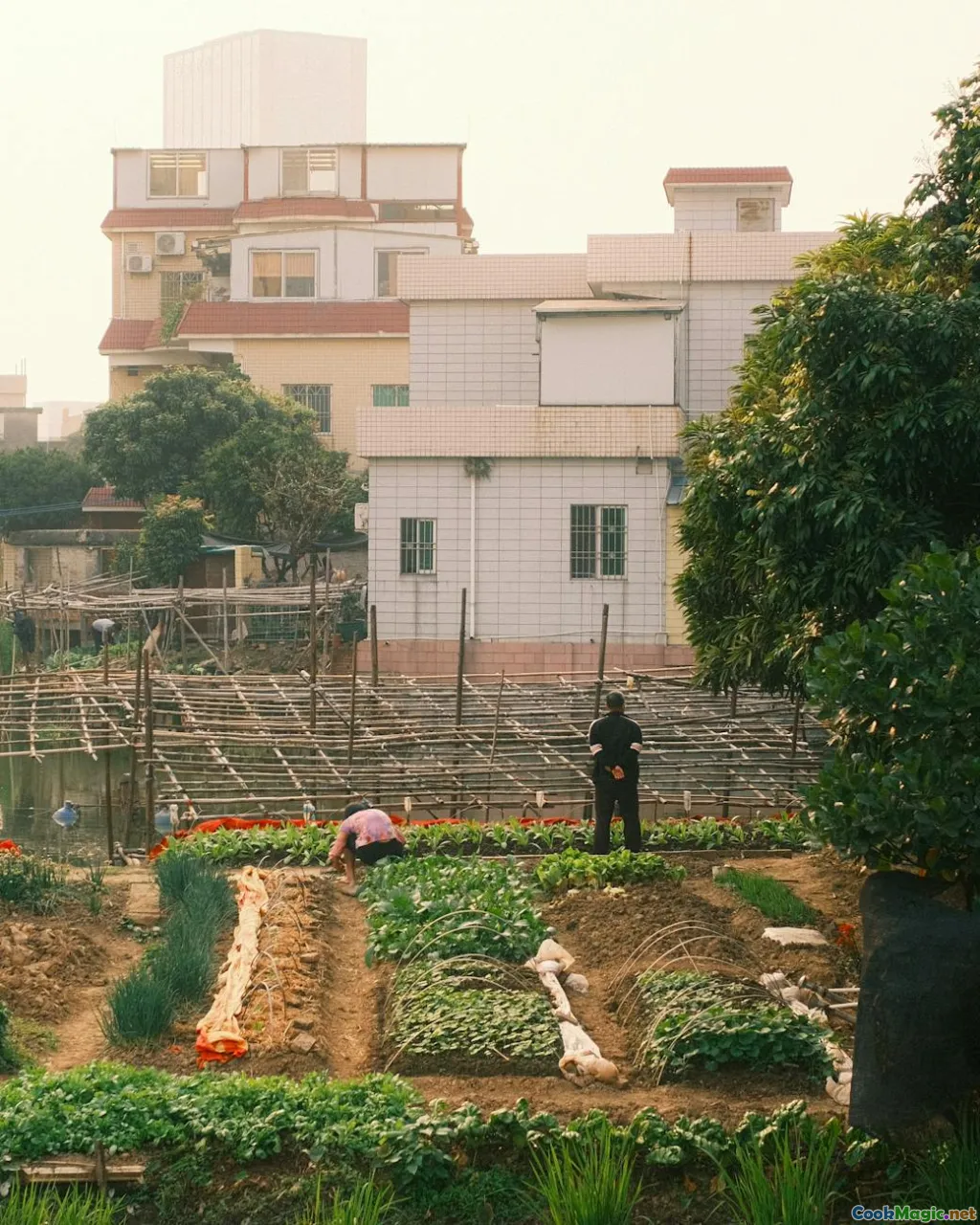Urban Farming Solutions for Fresh Restaurant Produce
8 min read Discover innovative urban farming solutions that revolutionize restaurant supply chains with fresh, sustainable, and locally grown produce. May 01, 2025 13:55
Urban Farming Solutions for Fresh Restaurant Produce
Imagine walking into a bustling city restaurant where the vibrant aroma of freshly picked herbs mingles with the savory scent of farm-fresh vegetables. It's a culinary experience that not only delights the senses but also embodies a profound commitment to sustainability and ethical food production. Welcome to the world of urban farming solutions—an innovative frontier transforming how restaurants source their ingredients, bringing farm freshness directly to the heart of the city.
The Rise of Urban Farming: A Cultural and Historical Perspective
Urban farming isn’t a new concept; its roots stretch back centuries. From the community gardens of Renaissance Europe to the victory gardens during World War II in the United States, city dwellers have long sought ways to grow their own food amidst concrete jungles. Today, urban farming is experiencing a renaissance, fueled by a desire for transparency, sustainability, and a closer connection to food origins.
Cities like New York, Tokyo, Berlin, and São Paulo are pioneering innovative methods—rooftop gardens, vertical farms, hydroponic systems—that redefine urban landscapes. These green oases serve not only as sources of fresh produce but also as symbols of resilience, community building, and environmental stewardship.
Why Urban Farming Matters for Restaurants
For restaurateurs, embracing urban farming solutions can be a game-changer. Here’s why:
- Freshness and Flavor: Nothing beats the taste and aroma of freshly harvested herbs and vegetables. Imagine basil with a fragrant, sweet scent, or cherry tomatoes bursting with juiciness, all harvested minutes before reaching the plate.
- Sustainability and Ethics: Urban farms reduce the carbon footprint associated with transportation. They promote local food systems, support biodiversity, and often employ organic practices, aligning with the ethical values of many modern diners.
- Supply Security: In times of supply chain disruptions—be it due to pandemics, climate change, or geopolitical issues—urban farms provide a reliable, resilient source of ingredients.
- Brand Identity and Customer Engagement: Showcasing a restaurant’s commitment to sustainability through visible urban farms can deepen customer loyalty and enhance brand storytelling.
Innovative Urban Farming Techniques for Restaurants
1. Rooftop GardensTransforming unused rooftop spaces into lush gardens offers a versatile solution. These gardens can grow herbs, leafy greens, strawberries, and even small root vegetables. For example,Blue Hill at Stone Barns in New York has harnessed rooftop farming to supply fresh produce, emphasizing farm-to-table excellence.
2. Vertical FarmingVertical farms utilize stacked layers of growing trays, often equipped with LED lighting and climate control. This method maximizes space and allows for year-round cultivation. TheSquare Roots initiative in Brooklyn exemplifies how urban vertical farms can produce herbs, lettuce, and microgreens efficiently.
3. Hydroponics and AeroponicsSoilless cultivation methods like hydroponics and aeroponics enable rapid growth with minimal water and space. These systems are ideal for herbs, microgreens, and strawberries. TheFarm.One in New York City specializes in such systems, providing restaurants with high-quality, pesticide-free produce.
4. Community-Supported Urban Farms
Collaborating with local urban farmers or establishing in-house micro-farms fosters community engagement and ensures supply stability. These partnerships often include educational components, connecting diners to the journey of their food.
Design and Operational Considerations
Implementing urban farming solutions requires thoughtful planning:
- Space Optimization: Assess available space—rooftops, balconies, or unused interior corners—and choose suitable farming techniques.
- Lighting: Invest in energy-efficient LED grow lights for indoor or shaded areas.
- Water Management: Incorporate rainwater harvesting and smart irrigation systems to reduce waste.
- Soil and Media: Use high-quality, organic soil or inert media like coconut coir for cleaner, more sustainable growth.
- Maintenance and Staffing: Train staff or hire specialists to manage crop health, harvesting, and integration into kitchen operations.
Inspiring Examples from the Culinary World
Blue Hill at Stone Barns, New York
This farm-to-table pioneer boasts a rooftop garden that supplies herbs and vegetables, emphasizing seasonal and sustainable eating. Their commitment reflects a broader movement that elevates urban farming as an essential component of culinary excellence.
Noma, Copenhagen
Known for its innovative approach, Noma has integrated urban farming into its ethos, experimenting with local herbs and vegetables grown on city rooftops, enriching its Nordic cuisine with hyper-local ingredients.
ONA, Barcelona
This restaurant combines vertical farming with traditional Catalan dishes, creating a sensory experience rooted in local terroir—demonstrating how urban farms can influence culinary storytelling.
Personal Reflection: A Taste of the Future
Having visited several urban farms, I’ve tasted microgreens harvested moments before serving—an explosion of freshness that elevates any dish. The aroma of basil and mint, still vibrant from the morning’s harvest, transforms a simple salad into an aromatic masterpiece. It’s a visceral reminder that sustainability and flavor are intertwined, and that urban farming is a vital step toward a more ethical and resilient food system.
The Road Ahead: Challenges and Opportunities
While urban farming offers exciting possibilities, it also faces hurdles—initial costs, technical expertise, and regulatory frameworks. However, innovations in technology and growing awareness are steadily overcoming these barriers.
The future of urban farming in the culinary world is promising. As chefs, restaurateurs, and consumers increasingly prioritize sustainability, urban farms will become integral to the fabric of city dining, blending agriculture, architecture, and gastronomy into a seamless, vibrant tapestry.
Conclusion
Urban farming solutions are not just a trend—they are a necessary evolution in our collective journey toward sustainable, ethical, and flavorful food. By cultivating fresh produce amid the city’s hustle and bustle, restaurants can redefine their relationship with the land, their community, and the planet. It’s a delicious revolution, and every plate served with ingredients from urban farms is a step toward a greener, more connected world.
Embrace the green revolution—bring farm-fresh flavors to your menu, champion sustainability, and inspire your diners to taste the future.









